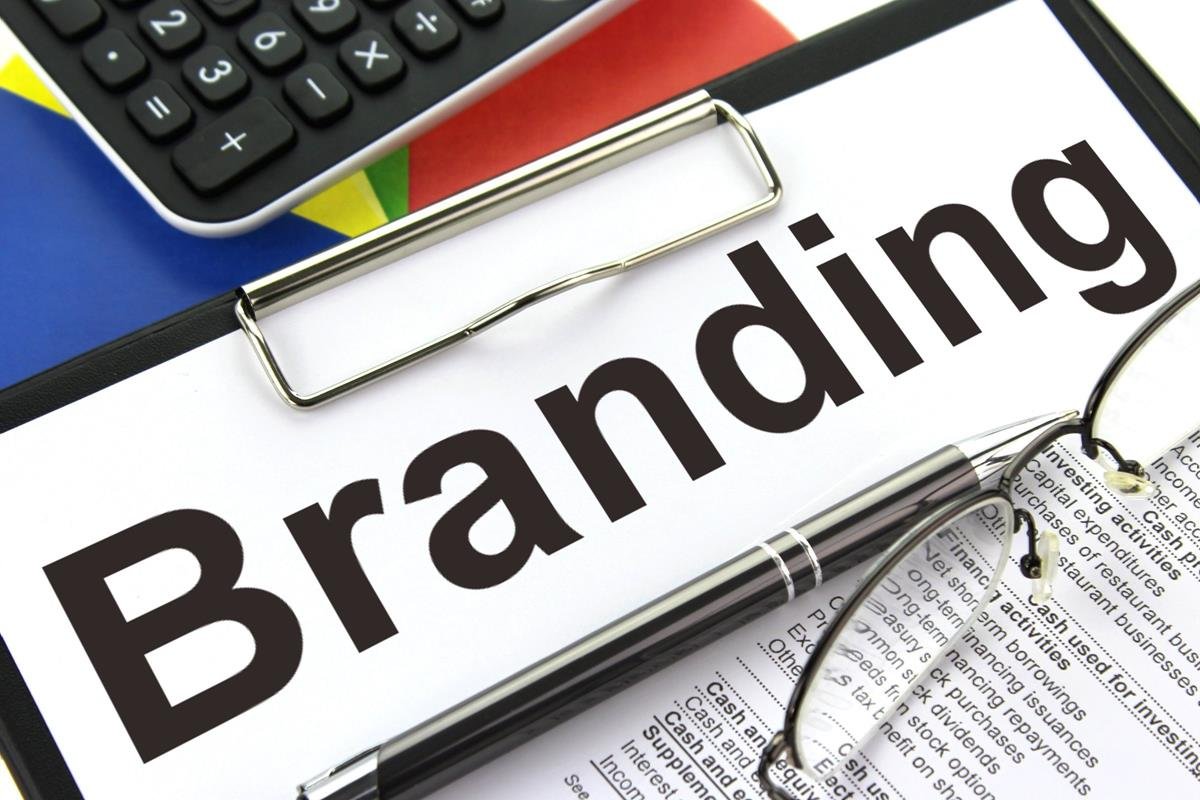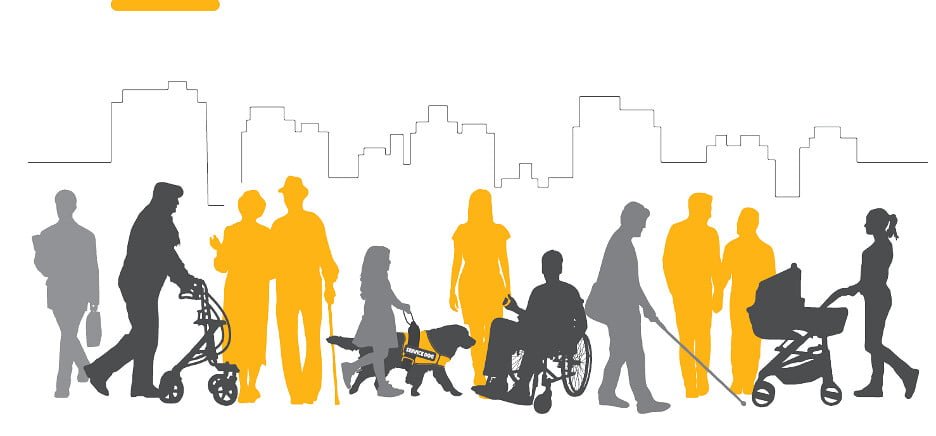Step into a world where barriers vanish, where information flows effortlessly, and where content is designed with one goal in mind – inclusion. Welcome to the realm of unlocking accessibility, where the art of enhancing content for all takes center stage. In this enlightening article, we delve into the transformative power of accessibility, revealing the ingenious methods and techniques that empower individuals to access information, regardless of their physical or cognitive abilities. Brace yourself for a captivating journey that explores the interplay between technology, creativity, and empathy, ultimately presenting a vision of a world where every digital experience is designed to be truly inclusive. Get ready to unlock the potential of accessibility, and witness the extraordinary impact it has on shaping the future we all deserve.
Table of Contents
- 1. Ensuring Inclusive Design: Bridging the Gap for Diverse Users
- 2. Leveraging Assistive Technologies: Empowering Individuals with Disabilities
- 3. Best Practices for Web Accessibility: A Guide to Reach and Engage a Wider Audience
- 4. Promoting Awareness and Education: Fostering an Inclusive Digital Experience
- Q&A
- To Wrap It Up

In the digital age, accessibility should be a top priority for content creators. After all, what good is valuable information if it’s not accessible to everyone? Unlocking accessibility is the key to ensuring that everyone can benefit from the content we create. Let’s explore some ways to enhance content for all.
1. Alt Text: Imagine walking through an art gallery blindfolded. Without alt text, that’s how people with visual impairments experience the web. By adding descriptive alt text to images, we can provide a meaningful experience for those using screen readers. Remember to be concise and descriptive, giving a clear picture of what the image conveys.
2. Captions and Transcriptions: Video and audio content can present challenges for individuals who are deaf or hard of hearing. Including captions or transcriptions not only makes the content accessible to them but also enhances the experience for those who prefer to read or view content in a quiet environment. It’s a win-win situation that allows your message to reach a wider audience.
3. Color Contrast: Did you know that approximately 4.5% of the world’s population experiences some form of color blindness? By ensuring a sufficient contrast ratio between text and background colors, we can make sure that everyone can read and understand the content. Don’t rely on color alone to convey information; use bold or underlined text to emphasize important points.
4. Keyboard Accessibility: Not everyone can use a mouse, so don’t forget to consider keyboard accessibility. Make sure that users can navigate and interact with your content using just the keyboard. Clear focus indicators and intuitive tab navigation will go a long way in ensuring a seamless experience for all users.
By implementing these accessibility enhancements, we can ensure that our content is accessible to a wider range of individuals. By widening our reach, we not only create a more inclusive online community but also open doors to new perspectives and opportunities. Let’s unlock the full potential of our content by enhancing accessibility for all.
1. Ensuring Inclusive Design: Bridging the Gap for Diverse Users
In today’s digital age, it is crucial to ensure that all users have equal access to online content. This means bridging the gap for diverse users and creating inclusive design. Imagine going to a website and not being able to navigate because the buttons are too small or the font is too difficult to read. It can be frustrating and exclusionary. But fear not! By implementing inclusive design principles, we can unlock accessibility and enhance content for all.
One key aspect of inclusive design is creating a user-friendly interface. This involves making sure that buttons and links are easily visible and large enough to be clicked on, especially for those with motor impairments. Additionally, using contrasting colors can make it easier for users with visual impairments to read and understand the content. This simple step can significantly improve the overall user experience. Web designers can also incorporate alternative text for images so that individuals using screen readers can get a clear understanding of the visual elements on a webpage. By including descriptive alt tags, websites become more accessible to everyone, regardless of their abilities.
Inclusivity and accessibility shouldn’t be an afterthought but an integral part of web design. By prioritizing the needs of diverse users and ensuring that the content is accessible to all, we can create a more inclusive online experience. So let’s unlock accessibility together and build a digital world that is truly for everyone. Remember, every small change can have a big impact!
2. Leveraging Assistive Technologies: Empowering Individuals with Disabilities
Assistive technologies play a crucial role in empowering individuals with disabilities, unlocking accessibility and enhancing content for all. These innovative tools provide support, convenience, and independence to those who need it most. By leveraging assistive technologies, individuals with disabilities can overcome barriers, participate fully in various activities, and enjoy a more inclusive experience.
1. Screen Readers: Imagine being able to browse the internet effortlessly without actually seeing the screen. Screen readers are assistive technologies that convert text into synthesized speech or braille displays. They allow visually impaired individuals to access websites, read documents, and engage with digital content. Popular screen readers like JAWS and NVDA navigate through website elements, identify headings, links, and text, enabling a seamless browsing experience for individuals with visual impairments.
2. Speech Recognition Software: The power of voice can extend far beyond everyday conversations. Speech recognition software converts spoken words into text, making it an invaluable tool for individuals with mobility impairments or limited dexterity. With the ability to dictate effortlessly, users can compose emails, write documents, and even control their computers hands-free. Widely used applications such as Dragon Naturally Speaking and Windows Speech Recognition demonstrate the transformative impact of this technology, empowering users to navigate the digital world with ease.
3. Alternative Input Devices: Traditional computer peripherals like a mouse and keyboard may not always be suitable for everyone. Alternative input devices offer individuals with physical disabilities alternative ways to interact with computers and other devices. These devices can range from touch-sensitive screens to joystick controllers, foot pedals, or even eye-tracking systems. The flexibility and customization options provided by alternative input devices ensure that no one is left behind, enabling all individuals to access and interact with technology in a way that suits their abilities.
4. Captioning and Subtitling: ensuring that multimedia content is accessible to individuals with hearing impairments is essential. Captioning and subtitling allow deaf or hard-of-hearing individuals to follow along with videos, movies, and other forms of multimedia. These textual representations of the audio provide an inclusive experience, ensuring that individuals with hearing impairments don’t miss out on valuable content. With the availability of automatic captioning tools like YouTube’s automatic captions and speech recognition algorithms, content creators can easily enhance their videos and make them accessible to a wider audience.
Through the power of assistive technologies, individuals with disabilities can overcome barriers, participate fully, and unlock the immense potential that technology offers to everyone. By incorporating these tools, web developers, content creators, and designers can create a more inclusive digital landscape where no one is left behind. Let’s embrace accessibility and empower individuals with disabilities by leveraging the capabilities of assistive technologies. Together, we can unlock a future where everyone can access and enjoy content, irrespective of their abilities.
3. Best Practices for Web Accessibility: A Guide to Reach and Engage a Wider Audience
Web accessibility is a crucial aspect of creating an inclusive online presence. With the right techniques, you can ensure that your content reaches and engages a wider audience. Here are some best practices to unlock accessibility and enhance your content for all:
1. Keyboard-friendly design: Ensure that your website can be fully navigated using a keyboard alone. This allows individuals with motor disabilities or those who cannot use a mouse to access your content easily. Test your website’s accessibility by navigating through it only using the Tab key.
2. Clear and concise content: Use simple language and present information in a clear and organized manner. Avoid jargon and complex sentence structures. Break down your content into shorter paragraphs and use subheadings where appropriate. This not only benefits individuals with cognitive disabilities but also improves the overall readability for everyone.
3. Color contrast: Ensure that there is sufficient contrast between the foreground and background colors of your website. This is particularly important for individuals with visual impairments or color blindness. Use tools like the WebAIM Contrast Checker to test and ensure your content is easily readable for all.
4. Alternative text for images: Include descriptive alternative text for all images on your website. This allows individuals with visual impairments who use screen readers to understand the content of the image. Be concise and descriptive in your alt text, providing a clear and accurate representation of the image.
By implementing these best practices, you can create a more inclusive and accessible online experience. Remember, accessibility is not just about compliance; it’s about making sure that everyone can access and engage with your content, regardless of their abilities. Together, let’s unlock accessibility and enhance content for all.
4. Promoting Awareness and Education: Fostering an Inclusive Digital Experience
In today’s digital age, it is crucial to promote awareness and education to foster an inclusive and accessible digital experience for all individuals. By unlocking accessibility and enhancing content, we can ensure that everyone, regardless of their abilities or disabilities, can fully participate in and benefit from the digital world.
One of the key ways to enhance content for all is by incorporating alternative text descriptions for images. Alt text provides a brief description of an image, allowing individuals with visual impairments to understand the content and context of the image. This simple addition can make a world of difference, as it empowers visually impaired individuals to fully engage with the digital content. Not only does it improve accessibility, but it also enhances Search Engine Optimization (SEO) by providing a text-based description for search engine crawlers to understand the context of the image.
Additionally, it is essential to ensure that color is not the sole means of conveying information. By using color as a visual cue in combination with other methods, such as text or icons, individuals with color blindness or visual impairments can equally comprehend the content. Moreover, utilizing clear and concise language is vital for beginners or those with limited literacy skills. By avoiding complex jargon or technical terms, we can make the digital experience more inclusive and user-friendly for all.
Q&A
Q: What does “Unlocking Accessibility” mean?
A: “Unlocking Accessibility” refers to the process of making content and information available and accessible to individuals with different abilities or disabilities. It involves ensuring that everyone, regardless of their disabilities, can fully engage with and benefit from various forms of content.
Q: How is accessibility enhanced in content?
A: Content can be enhanced for accessibility through a variety of means. This may include providing alternative formats, such as text-based alternatives for images, videos, or audio content. Other methods may involve incorporating closed captions, audio descriptions, or transcript options to assist those with hearing impairments or visual disabilities. Furthermore, using readable fonts, proper contrast, and clear language can greatly improve accessibility for individuals with cognitive or visual impairments.
Q: Why is enhancing content for accessibility important?
A: Enhancing content for accessibility is crucial because it promotes inclusivity and equal access to information for individuals with disabilities. Accessible content empowers people to participate actively in various aspects of life, including education, employment, entertainment, and social interactions. It also helps bridge the digital divide by ensuring that no one is excluded from the digital world due to their disabilities.
Q: Who benefits from enhanced accessibility in content?
A: Enhanced accessibility benefits not only individuals with disabilities but also society as a whole. Individuals with visual impairments, hearing impairments, mobility limitations, or cognitive disabilities greatly benefit from accessible content. However, it is important to recognize that anyone could benefit from enhanced accessibility. For instance, transcripts or captions can be valuable when viewing videos in noisy environments or in situations where individuals prefer silent browsing.
Q: What are some challenges in unlocking accessibility?
A: Unlocking accessibility can present several challenges, such as lack of awareness about accessibility guidelines and standards among content creators. Additionally, accessibility efforts can be hindered by budgetary constraints, limited technological resources, or a lack of understanding regarding the diverse needs of individuals with disabilities.
Q: What are some solutions to overcome these challenges?
A: To overcome these challenges, it is crucial to raise awareness and educate content creators and developers about accessibility best practices. Providing training and resources related to accessibility guidelines can help create a more inclusive mindset. Collaborating with experts in accessibility or involving individuals with disabilities in the content creation process can also result in improved accessibility. Moreover, investing in accessible technologies and tools can alleviate some of the technological barriers.
Q: How can individuals contribute to enhancing accessibility?
A: Individuals can play a vital role in enhancing accessibility by advocating for inclusive practices and accessible content. They can bring attention to inaccessible content, educate others about accessibility needs, and encourage content creators and service providers to prioritize accessibility in their offerings. Additionally, individuals can provide feedback on accessibility-related issues to help improve the overall accessibility of various platforms and content.
Q: What is the future of accessibility in content?
A: The future of accessibility in content looks promising. With advancements in technology and increased awareness, there is great potential for more innovative solutions to enhance accessibility. Furthermore, as inclusive design principles gain traction, content creators are likely to prioritize accessibility from the outset. With continued efforts and collaboration, the goal of fully accessible content for all individuals is within reach.
To Wrap It Up
In a world where content consumption is on the rise, it is imperative that we ensure inclusivity and accessibility for all. The journey of unlocking accessibility has the power to revolutionize the way we perceive and experience information. By enhancing content for everyone, we embark on a path that not only empowers individuals with disabilities but also fosters a more inclusive society.
The digital landscape has become increasingly diverse, with a myriad of platforms and mediums through which content is shared. Yet, amidst the rapid advancements, a significant portion of the population is still left behind. Accessibility barriers continue to exist, limiting the opportunities for those who rely on alternative means to access information.
However, the key to unlocking accessibility lies in our hands. It requires a conscious effort to bridge the gap by creating content with a universal design approach. By fostering an environment that prioritizes inclusivity, we can empower individuals with disabilities to engage with content just like anyone else. This is not just about adhering to legal requirements, but about embracing a mindset that values diversity and the inherent worth of every person.
Enhancing content for all is a multifaceted journey that encompasses different aspects. From audio descriptions and closed captions for visually impaired individuals, to easy-to-navigate interfaces for those with motor impairments, every step we take brings us closer to a truly accessible digital world. Let us recognize that accessibility is not solely a matter of accommodation; it is a catalyst for innovation, pushing boundaries and inspiring new possibilities.
The benefits of unlocking accessibility extend beyond those with disabilities. By embracing universal design principles, content creators and organizations are tapping into untapped markets and reaching a wider audience. It emboldens creativity and fosters innovation by challenging the status quo. It compels us to think differently, to break the mold, and to create content that resonates with the hearts and minds of people from all walks of life.
As we continue to unlock accessibility and enhance content for all, let us embrace the power of empathy and imagination. Let us celebrate the diversity that encompasses humanity and look beyond the barriers we encounter. For, in the art of crafting content that caters to everyone, we embark on a journey that unites us, transcending limitations and unlocking a world of boundless possibilities.

